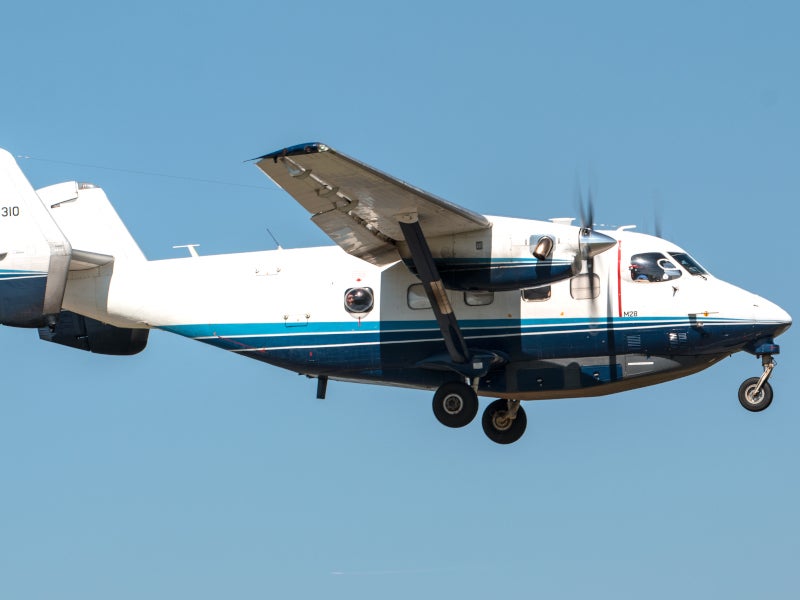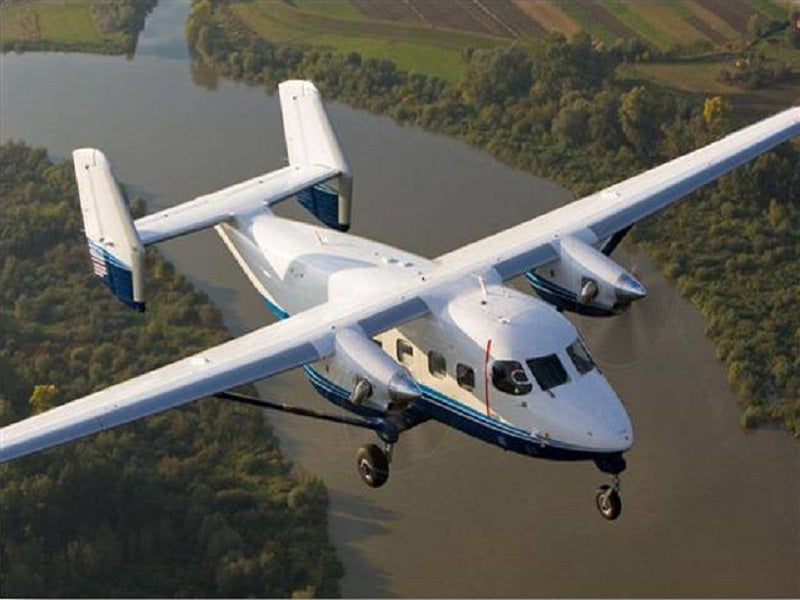C-145A Skytruck is a light cargo and troop transport aircraft designed and manufactured by Polskie Zaklady Lotnicze (PZL) Mielec for the US Air Force (USAF). The aircraft is primarily used to assist Aviation Foreign Internal Defence (AvFID) missions of the Air Force Special Operations Command (AFSOC).
The C-145As were deployed to support theatre special operations commands in Afghanistan and eastern Africa. The Air Force Special Operations Warfare Center operated up to ten C-145A Skytrucks and deployed an additional six by 2015.
The transport aircraft can be reconfigured to perform precision combat airdrop, combat search-and-rescue, humanitarian assistance, casualty evacuation and disaster relief missions.
AFSOC retired 11 C-145As in 2015 and these were offered to US allies. The Estonian Air Force received the first of two C-145As in 2019, while Kenya accepted six aircraft. Costa Rica and Nepal will receive two aircraft each.
The five aircraft remain in service of the AFSOC for CAA aircrew training.
Development of C-145A Skytruck transport aircraft
The C-145A Skytruck is a variant of PZL M28 Skytruck light twin-engine aircraft manufactured by Polskie Zaklady Lotnicze (PZL) Mielec, a Sikorsky company, based in Poland.
The PZL M28 Skytruck is a licence-built version of the Antonov An-28 and is in service with the Polish Air Force, Vietnamese Air Force, Polish Navy, Royal Nepalese Army Air Service, Venezuelan Army and Indonesia Air Police.
The C-145A Skytruck was initially procured to support the non-standard aviation mission in 2009. It was deployed by the AFSOC’s 318th Special Operations Squadron under the 1st Special Operations Wing at Cannon Air Force Base to support AvFID missions in March 2011.
It was relocated to the 919th Special Operations Wing at Duke Field in January 2013 and was operated by the 6th Special Operations Squadron. It replaced MC-130E Combat Talon I aircraft, which was retired in April 2013.
C-145A Skytruck design and features
C-145A Skytruck transport aircraft features an all-metal structure and requires less operating costs. It is equipped with high wings and two vertical fins. A non-retractable, fixed tricycle landing gear with a steerable nose wheel is attached to enable short take-off and landings (STOL) on unprepared runways.
The aircraft has a length of 43ft, height of 16ft and wing span of 72.4ft. It has a maximum take-off weight of 16,534lb and can carry a maximum cargo of 5,000lb or up to four litter patients.
The flight deck accommodates a crew of two pilots and one loadmaster. The aircraft can carry a total of 16 passengers or 10 combat rigged paratroopers based on the mission requirements. It is capable of performing airland and airdrop of cargo up to a maximum capacity of 2,400lb.
Avionics aboard C-145A Skytruck aircraft
C-145A Skytruck aircraft is equipped with Honeywell’s BendixKing avionics suite for improved control during day and night. The flight deck is fitted with an autopilot and dual electronic flight instrument system (EFIS).
The aircraft incorporates dual communication and radio navigation equipment for flight plans compliant with visual flight rules (VFR) and instrumental flight rules (IFR). The equipment include VHF omni directional radio range (VOR) navigation system, a global positioning system (GPS), instrument landing system (ILS) and an automatic direction finder (ADF).
The C-145A also features Enhanced Ground Proximity Warning System (EGPWS) and traffic alert and Collision Avoidance System II (TCAS II).
Propulsion and performance
C-145A Skytruck is powered by two PT6A-65B turboprop engines manufactured by Pratt and Whitney. Each engine drives five-blade HC-B5MP-3 constant-speed propellers and produces a power output of 1,100shp at a rate of 1,700rpm.
The C-145A operates at a service ceiling of 25,000ft with an on board supplemental oxygen equipment. It performs take-off and landing at 1,000ft, with maximum gross weight. The propulsion system enables the aircraft to fly at a maximum cruise speed of 223kt and to a maximum range of 1,010nm.









